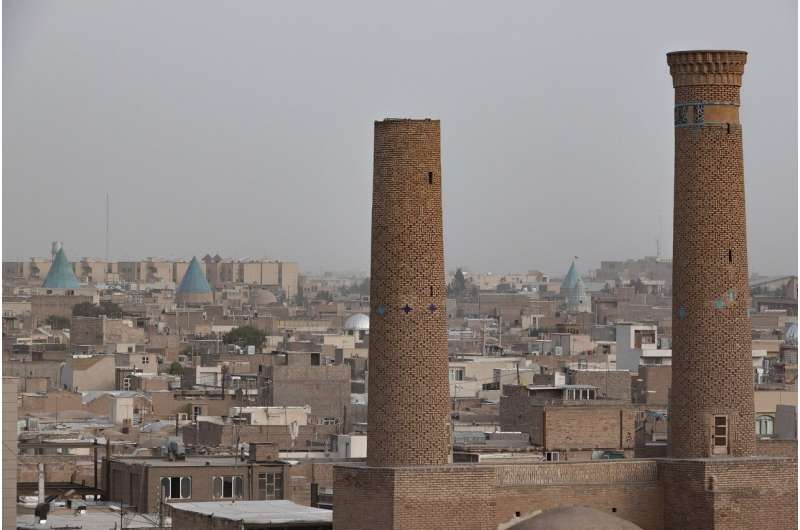Drought, sand storms and evacuations: How Iran's climate crisis gets ignored

Sadie Harley
scientific editor

Andrew Zinin
lead editor

Iran and Israel fought a 12-day war in June. Although a ceasefire was declared the same month, news coverage of Iran continues to focus on the conflict's aftermath and the Middle East's tense political situation.
Meanwhile, Tehran—home to more than 10 million people—is facing one of its worst in decades. Dams near the capital are at their lowest levels —the Karaj dam (one of the city's major suppliers), which has 25 million cubic meters of water storage, is 86% empty.
In the center of the country, the is sinking as swallows cars and pedestrians. Land subsidence is mainly caused by over-extraction of for agriculture—more than 90% of Iran's water is extracted for agricultural use. Many of Iran's have turned into a bed of salt.
Even though schools and roads in Tehran in September due to their , international media coverage of this major environmental problem remains alarmingly low—limited and Persian-language .
Earlier this year, the country's southern provinces sand and dust storms that sent thousands to hospitals and disrupted infrastructure. Again, this went mostly unreported outside Iran.
There has also been little international coverage of the of the war on Iran.
In contrast, local media that Israel's missile attacks on oil depots close to Tehran released 47,000 tons of greenhouse gases into the city's atmosphere, causing air pollution.
They claimed surface and groundwater systems, soil and wider ecosystems have all been damaged by the leakage of industrial wastewater, urban sewage and other forms of pollution including noise, vibration, radiation and heat—all of which pose a threat to the lives of humans, animals and plants.
For months, international news outlets have their coverage of Iran on questions about its nuclear program and worsening ties with the west. They have covered , , and Iranian officials' statements about and nuclear weapons.
This is not surprising. An Reuters Institute for the Study of Journalism at the University of Oxford found that newsrooms covering the Middle East will mainly report on war and conflict. Other academic studies that long-term but far-reaching environmental issues are far down their list of priorities.
Even inside Iran, the news media has largely concentrated on the war. During the conflict, conservative Iranian state-affiliated news outlets such as Tasnim, Mizan and Kayhan focused almost entirely on and of "national defense" and "foreign threats."
But when the fighting ended, some Iranian newspapers, particularly those which advocate for gradual social, political and press freedom (along with the state-run IRNA news agency), started to cover the drought and . The conservative Iranian news media outlets are now covering these stories a little, but less so than the reformist media, such as Payamema and Shargh.
Today, the Middle East faces some of the world's worst environmental crises—including droughts, floods, with enormous consequences. Across Iran's provinces, many rivers and have dried up. Air pollution is getting and are devastating lives and livelihoods.
What does the world know?
My looks at how the climate change across the Middle East and North Africa, and particularly in Iran.
I also write for news organizations and . In doing this research, I have found that Iran's environmental problems are largely of government mismanagement and the resources—including excessive dam construction and groundwater .
Even on the when international media outlets have covered Iran's water crisis in recent months, the lead section of the coverage is often tied to the war.
While reporting on war is essential to expose its human costs and security, environmental coverage is equally important. Climate change will not pause for a ceasefire, and neglecting it risks that affects everyone.
Provided by The Conversation
This article is republished from under a Creative Commons license. Read the .![]()




















